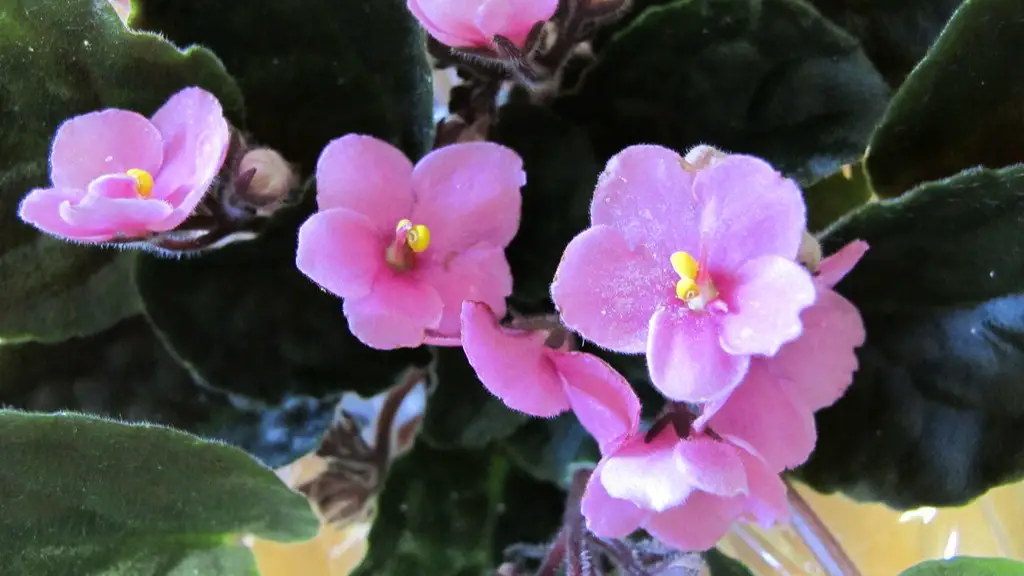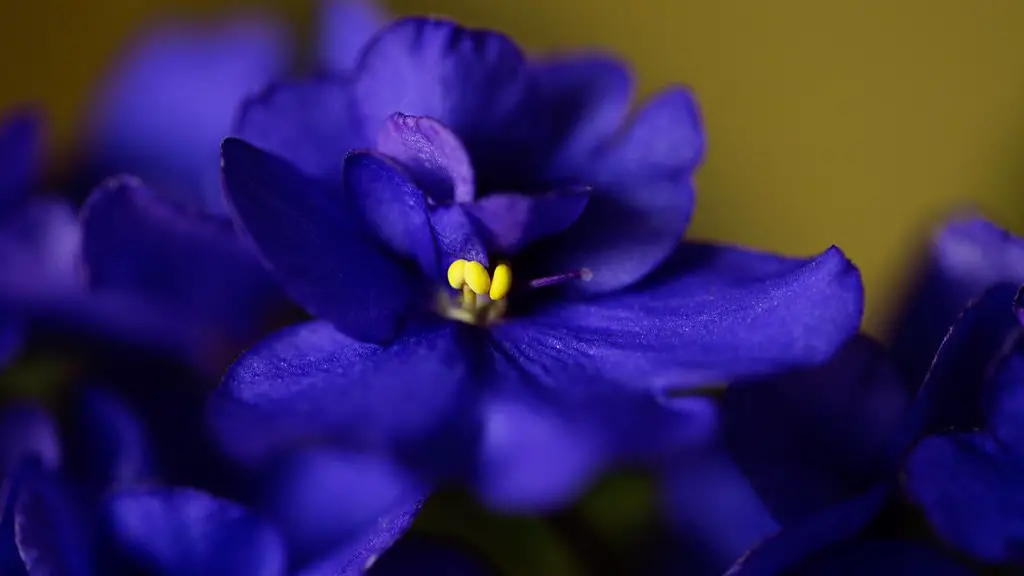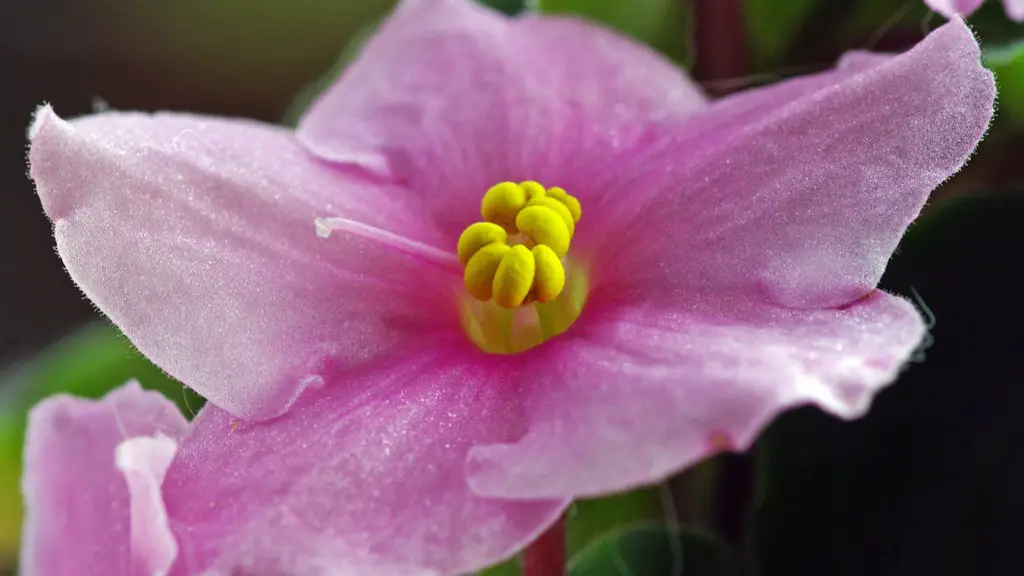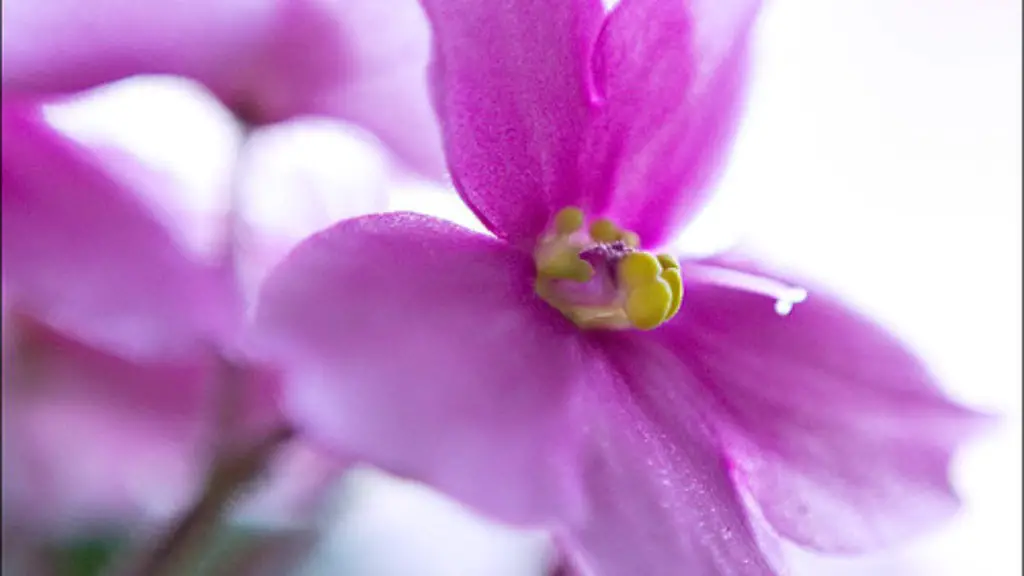African violets are a type of plant that is known for its beautiful, purple flowers. However, sometimes the leaves of African violets can turn yellow. There are a few different reasons why this may happen. One reason could be that the plant is not getting enough light. African violets need bright, indirect sunlight in order to thrive. If the leaves are turning yellow, it may be a sign that the plant is not getting enough light. Another reason for yellow leaves could be that the plant is getting too much water. African violets need to be watered about once a week, and if they are getting too much water, the leaves can turn yellow. Finally, yellow leaves can also be a sign of a nutrient deficiency. If the plant is not getting enough nitrogen or other nutrients, the leaves may turn yellow. If you see that the leaves of your African violet are turning yellow, it is important to try to determine the cause so that you can take steps to fix it.
There are a few reasons why African violet leaves might turn yellow. One reason could be that the plant is not getting enough light. African violets need bright, indirect light in order to grow well.Another reason could be that the plant is not getting enough water. African violets need to be kept evenly moist – not too wet or too dry. Over-watering can also cause the leaves to turn yellow. Finally, the leaves could be turning yellow because of a nutrient deficiency. If the plant is not getting enough nitrogen, iron, or magnesium, the leaves can turn yellow.
What to do when African violet leaves turn yellow?
If you notice that the leaves of your African violet are turning yellow, it is a sign that the plant is not getting enough light. Move the plant to a brighter location with indirect light and the leaves should recover. If the problem persists, fertilize the plant to ensure that it is getting enough food.
It is important to remove yellow leaves from African Violet plants to maintain a healthy plant. If the yellow leaves are not removed, it can affect the health of the entire plant.
What do Overwatered African violets look like
If your African violet’s leaves are droopy, soft, and mushy, it’s a sure sign that your plant is overwatered. Here are some additional signs to look for that can confirm that overwatering is the source of your plant’s problems:
-The leaves may be yellow or brown, and they may drop off the plant easily.
-The stem may be soft or mushy.
-There may be mold or mildew growing on the plant.
-The roots may be black or slimy.
If you see any of these signs, it’s important to take action to correct the problem. Allow the plant to dry out completely, and then water it sparingly in the future. If the roots are black or slimy, you may need to repot the plant in fresh soil.
African violets are beautiful, delicate flowers that are native to Africa. They are known for their ability to thrive in dry, arid conditions and can even go without water for weeks at a time. However, when watering African violets, it is important to only do so once a week and to allow the plant to completely dry out between waterings. This can be easily accomplished by setting up a wicking system.
How do you rejuvenate African violets?
If your African violet has burnt or dry leaf tips, it’s likely dehydrated. Try placing your plant on a humidity tray to boost the moisture in the air. If your African violet has drooping leaves, it may be suffering from low temperatures. Keep your indoor environment around 70 degrees Fahrenheit, even at night.
African violets need plenty of sunlight, but only indirect sunlight. If violets get more than this, they will begin to show signs of scorching on the leaves and flowers. In some cases, too much sunlight will turn variegated leaf varieties entirely green.
Will yellow African violet leaves turn green again?
Once African violet leaves turn yellow, they will not turn green again. If proper care is provided, new green leaves will grow on your African violet, but the yellow leaves will not become healthy again. When the leaves are turning yellow due to natural aging, new healthy leaves will grow.
African Violets need to have their roots aerated in order to stay healthy, so it’s important to keep them moderately moist but never soggy. Watering from the bottom so they can soak the water up over an hour or so will help to keep water out of the plant’s crown. African Violets like warmer water, around 70 degrees.
Should African violets be misted
To keep your African violet healthy, it is important to not mist the foliage as this can cause permanent leaf spotting. Instead, water the plant at the base, making sure to use water that is room temperature. African violets are also susceptible to crown rot, so it is important to not saturate the crown of the plant with water.
Watering your plant is important to encourage blooming, but you don’t want to overwater. Allow the soil around the roots to dry out before watering again. The best way to water your plant is from the bottom, using room temperature water. Place the plastic grower’s pot in a bowl of water and let the plant absorb the water for no more than 30 minutes.
Do African violets need sun?
African violets need indirect sunlight in order to thrive. Direct sunlight can actually burn the leaves of the plant, so it’s best to choose a north- or east- facing window that will provide indirect light. It’s also important to keep the plants away from cold glass and to rotate the pot once a week so all leaves receive light. During the winter months, you can extend the daylight by placing African violets under a grow light.
African violets do best when they are slightly pot-bound, so choose a pot that is on the smaller side. A professional tip is to choose a pot that is about 3-4 inches in diameter for a standard African violet plant.
Where is the best place to put an African violet
African violets are best grown indoors in North America, as their leaves need to stay dry. They should be placed in a location with bright, indirect light for the best color and blooms. A plant stand three feet away from a west- or south-facing window is an ideal location.
When it comes to watering your African violets, it is best to err on the side of caution and use filtered or distilled water. This will help to ensure that your plants do not experience any adverse effects from chlorine, chloramines, or dissolved solids that may be present in tap water.
How do I know if my African violet needs water?
It is important to feel the top of the soil before watering African violets as they should be allowed to dry out between each watering. Overwatering can kill the plant as the fine roots need air which a soggy wet soil mass will not provide.
Epsom salts are a great way to provide your plants with essential magnesium and sulfur. These two minerals are needed to produce beautiful blooms and healthy foliage. To use, simply mix one and a half teaspoons of Epsom salt in a quart of tepid water and swirl to dissolve. Then water your African violets (below the leaves) with this solution once a month.
Final Words
There are several reasons why African violet leaves might turn yellow. One possibility is that the plant is not getting enough light. African violets need bright, indirect light to thrive. If the plant is not getting enough light, the leaves will turn yellow.
Another possible reason for yellow leaves is over-watering. African violets need to be watered regularly, but too much water can cause the leaves to turn yellow and drop off. Be sure to allow the soil to dry out between waterings.
Finally, African violets are susceptible to a number of pests and diseases. pests such as aphids, mealybugs, and spider mites can all cause the leaves to turn yellow. Diseases such as bacterial blight and powdery mildew can also cause yellowing leaves. If you suspect that your plant has a pest or disease, take it to a garden center or nursery for diagnosis and treatment.
There is no one answer to this question as there can be several reasons why the leaves of an African violet might turn yellow. It could be due to a nutrient deficiency, too much direct sunlight, or even drought stress. If you notice that your African violet’s leaves are turning yellow, it’s best to try and determine the underlying cause so that you can take steps to correct it.





